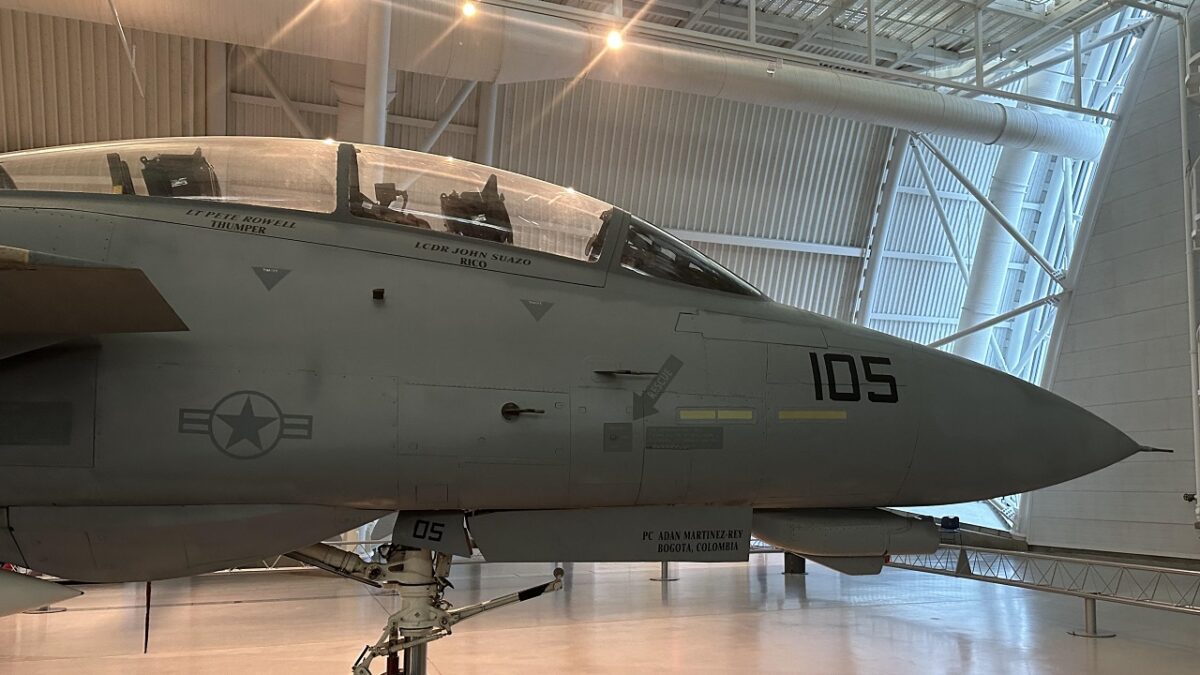The F-14 Tomcat has undergone a resurgence in popularity following the release of the hit Hollywood blockbuster Top Gun: Maverick last summer.
Widely touted as of the most iconic military airframes to take to the skies, the Tomcat served the Navy effectively for decades.
In fact, the formidable fighter became the first of the U.S. “Teen Series” fighters, followed by the F-15 Eagle, F-16 Fighting Falcon, and the F/A-18 Hornet.
And, Interestingly enough, the F-14 is still in service today with one of America’s enemies: Iran.
How did the F-14 Tomcat originate
Initially conceptualized to fulfill the U.S. Navy’s need for a long-range interceptor to protect carrier battle groups from munitions launched by the Soviet Union’s bombers and submarines, the F-14 was born.
During the 1960s, then-Secretary of Defense Robert McNamara called upon the Navy and Air Force to collaboratively design a single-service aircraft that could satisfy the needs of both services.
In theory, the Tactical Fighter Experimental (TFX) program was a cost-effective solution, but the Navy was opposed to the development of the proposed F-111B airframe.
Ultimately, the program was halted and the Naval Fighter Experimental (VFX) program emerged as the sea-based service. Northrop Grumman was officially awarded the contract to design the Tomcat in 1969. Within two years, the F-14 took its maiden flight. By 1973, the fighter reached initial operational capability. To this day, the F-14 is the largest and heaviest fighter jet to ever land on an aircraft carrier.
The F-14 Tomcat and its unparalleled capabilities led the skies for many years
Designed to supersede the F-4 Phantom II, the Tomcat possessed several key improvements, including advanced dog-fighting capabilities, agility, and the capacity to carry out both long-range interception and air-superiority missions.
With a max speed in excess of Mach 2 (twice the speed of sound) and a rate of climb of approximately 45,000 feet per minute, the F-14 was unparalleled in the skies throughout the 1970s.
The F-14 Tomcat could also pack some serious punch compared to its foreign counterparts. To counter the growing threat from the Soviet Union, the fighter could sport six AIM-54 Phoenix missiles, AIM-9 Sidewinder missiles, and a 20mm M61 Vulcan internal cannon.
Over the years, the Tomcat underwent several facelifts, including the incorporation of the Lockheed Martin LANTIRN precision strike navigation and targeting pod in the mid-1990s.
As explained by Air Force Technology, “The LANTIRN targeting pod includes a dual field of view FLIR and a laser designator / rangefinder. The navigation pod also contains a FLIR and terrain-following radar. A Lockheed Martin infrared search and track system is installed in a sensor pod under the nose.”
The F-14 is still in service…with Iran
Although the Tomcat was retired from the U.S. Navy in 2006, the fighter jet actually remains in action- with the Imperial Iranian Air Force.
During the 1970’s, then-President Nixon agreed to sell Imperial Iran 79 operational Tomcats in a bid to gain more allies as Cold War tensions were heating up.
However, following the 1979 Islamic Revolution in Iran, the White House regretted sending over the country’s top-of-the-line fighter to an adversarial monarchical regime.
MORE: F-35 – The Best Fighter Jet Ever?
MORE: SR-72 – A Mach 6 Bomber?
MORE: Su-57 – Is Russia’s Stealth Fighter Doomed?
Not only does Iran still possess F-14 airframes, but it has also increased the number of operational fighters throughout the last few decades and modified them to include more advanced avionics and electronics.
Consequently, Iran’s 40 or so remaining F-14 fighters represent the world’s sole active Tomcats today.

F-14 Tomcat. Image taken at National Air and Space Museum on October 1, 2022. Image by 19FortyFive.

F-14 Tomcat. Image taken at National Air and Space Museum on October 1, 2022. Image by 19FortyFive.

F-14 Tomcat. Image taken at National Air and Space Museum on October 1, 2022. Image by 19FortyFive.

F-14 Tomcat. Image Taken at U.S. Air and Space Museum outside of Washington, D.C. Image Credit: 19FortyFive.com
Since air power has never been Tehran’s strong suit, the regime is likely to stop flying its rapidly aging fleet in the near future.
Maya Carlin is a Senior Editor with 19FortyFive. She is also an analyst with the Center for Security Policy and a former Anna Sobol Levy Fellow at IDC Herzliya in Israel. She has by-lines in many publications, including The National Interest, Jerusalem Post, and Times of Israel.

